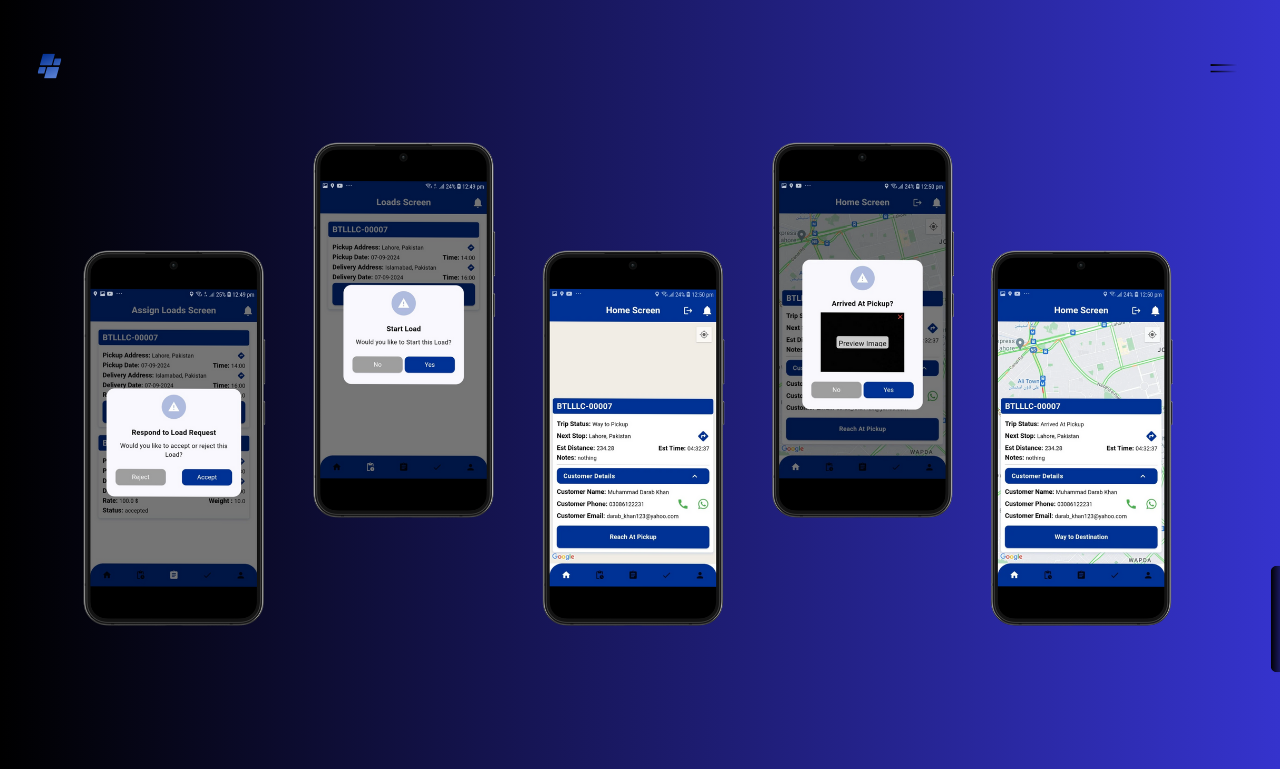
This platform, developed by Tiecodes, is a comprehensive fleet management software and load board system designed to streamline freight and transport operations. The system allows users to post loads, place bids, and manage shipments efficiently while providing GPS tracking system and vehicle tracking for real-time fleet visibility. By integrating live tracking on a dynamic map, logistics and transport companies gain operational transparency and can optimize deliveries for faster, more reliable service.
Key Features:
Load Board System: Post shipments, review bids, and assign loads efficiently.
Real-Time Vehicle Tracking: Monitor vehicles live for complete operational visibility.
Fleet Management Tools: Track vehicle performance, fuel usage, and shipment status.
Dispatch Software Integration: Assign trips, manage routes, and improve fleet coordination.
Transport Management: Ensure optimized workflow, faster deliveries, and better collaboration between shippers, carriers, and drivers.
Powered by Tiecodes, this platform provides a reliable, scalable, and intelligent solution for modern logistics businesses, enhancing fleet performance, shipment tracking, and load allocation efficiency.
The Home Screen, developed by Tiecodes for both web and mobile applications, serves as the central hub for managing transport operations. It provides an interactive map view where users can see all active vehicles in real time.
Key features include:
Selecting pickup and drop-off locations
Automatic route generation between points
Displaying vehicle details such as type, availability, and status
Showing customer information linked to each trip
Designed for ease of use, the Home Screen allows drivers, shippers, and administrators to quickly plan trips, monitor fleet activity, and manage customer assignments. By integrating real-time tracking, vehicle data, and customer details, Tiecodes ensures smooth, efficient, and transparent logistics operations from a single interface.
The Assign Load Screen, crafted by Tiecodes, is designed to make shipment allocation fast and intuitive. Users can select available vehicles, assign trips, and approve driver bids in just a few taps. The screen provides a real-time overview of vehicle status, driver availability, and route efficiency, ensuring every load is allocated optimally.
With smart filtering and search options, operators can prioritize urgent shipments, balance fleet utilization, and reduce idle time. This module bridges the gap between shippers and carriers, making freight management smoother, faster, and more reliable.
The Profile Screen offers users a clear and organized view of their account details, designed by Tiecodes for web and mobile platforms. It allows drivers, shippers, and administrators to update personal information, manage credentials, and review activity history.
Additional features include trip summaries, assigned loads, and performance statistics, giving each user a personalized dashboard experience. By centralizing all personal and operational data, the Profile Screen ensures transparency, efficiency, and easy access to essential information, supporting smooth day-to-day operations in the transport and logistics system.